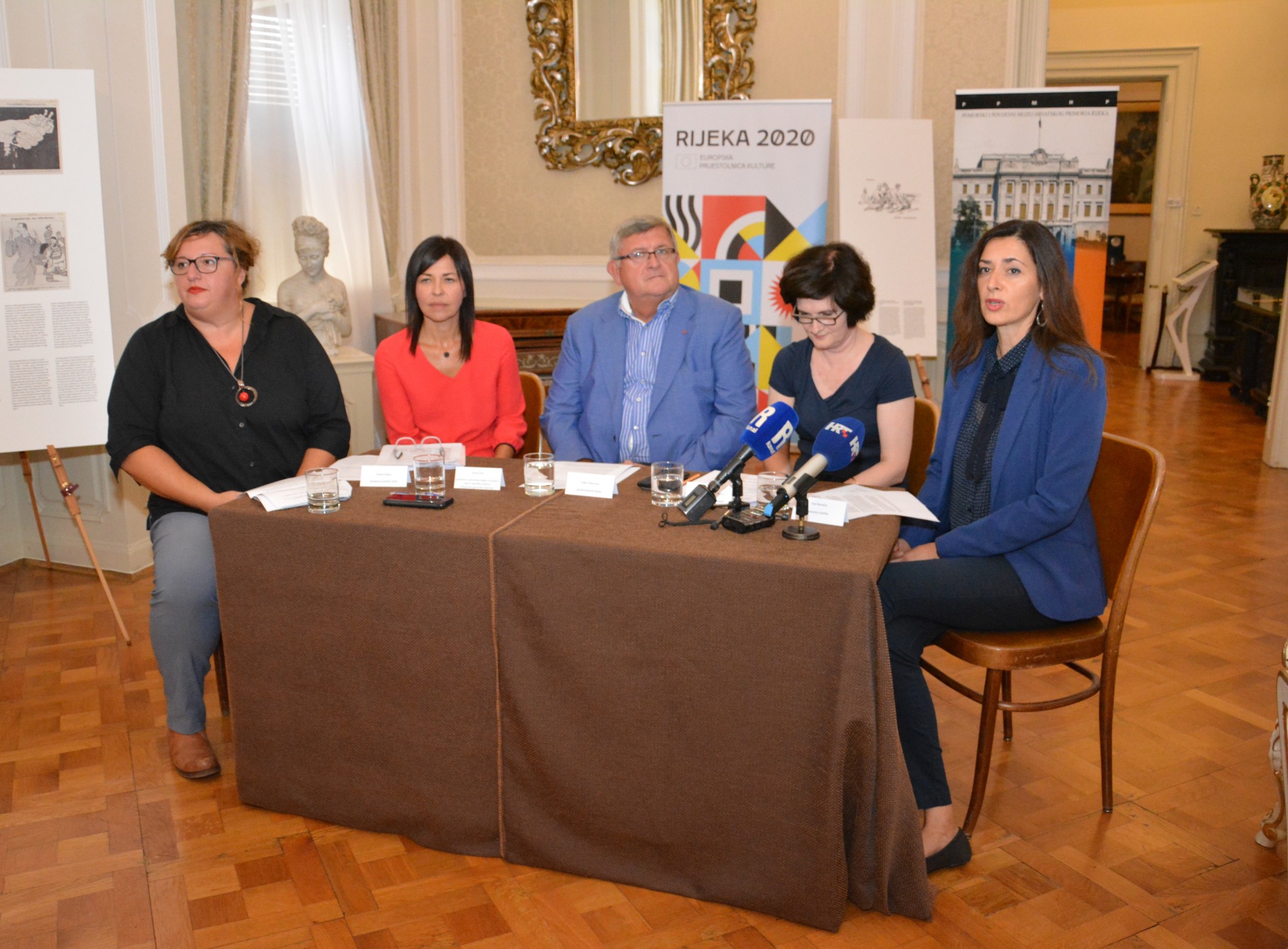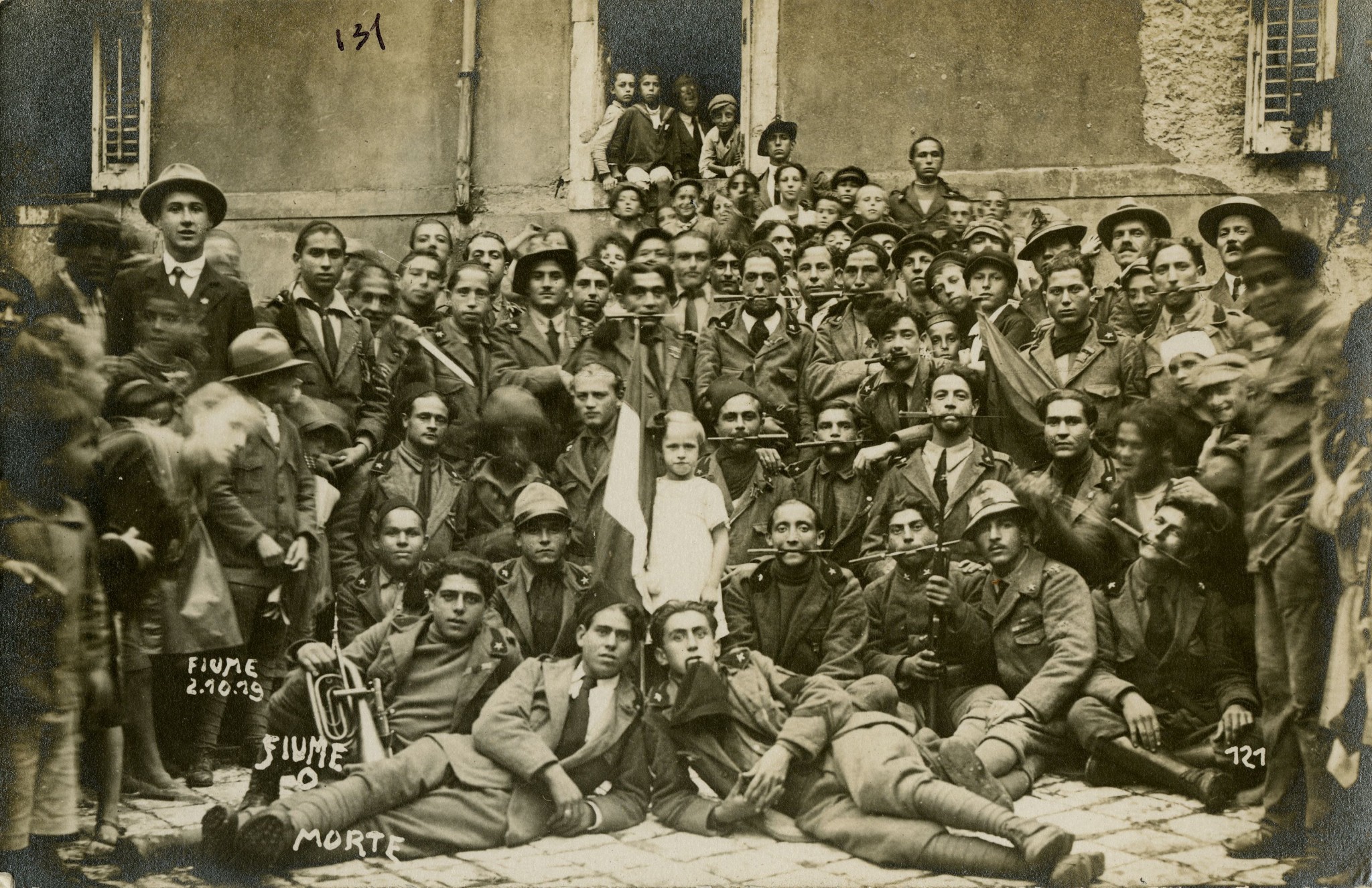The Maritime and History Museum of the Croatian Littoral Rijeka and Rijeka 2020 – European Capital of Culture present the “D’Annunzio’s Martyr – L’olocausta di Annunzio” exhibition, which opens at the Governor’s Palace in Rijeka on 12 September 2019 at 7 pm, on the exact day of the 100th anniversary of D’Annunzio’s occupation of Rijeka.
D’ Annunzio’s Martyr is also the first notable exhibition to be included in the Rijeka 2020 – European Capital of Culture programme. The authors of the exhibition are Tea Perinčić and Ana–Maria Milčić, with design by Sanjin Kunić and Nikolina Radić Štivić.
At today’s presentation, museum director Nikolina Radić Štivić emphasised that the exhibition interprets D’Annunzio from the humanist viewpoint of contemporary antifascism on which modern Europe was built.
The European Capital of Culture project promotes the values of modern Europe, united and strong in its unity, as opposed to historical and contemporary fascism. The D’Annunzio’s Martyr exhibition thus exemplifies the values represented by the European Capital of Culture 2020 project.

Emina Višnić, Director of the RIJEKA 2020 Company, Sonja Šišić, Head of the Department of Culture, Sport and Technical Culture of Primorje-Gorski Kotar County, Vojko Obersnel, Mayor of Rijeka, Nikolina Radić-Štivić, Director of the Maritime and History Museum of the Croatian Littoral and Tea Perinčić, exhibition author.
Confronting Rijeka with a difficult period in history
Gabriele D’Annunzio, the controversial Italian military commander and precursor to fascist ideology, occupied Rijeka with his paramilitary forces on 12 September 1919 and wilfully proclaimed the city a part of the Kingdom of Italy. D’Annunzio was invited to arrive and stay in Rijeka by the local irredentists, who advocated the right to proclaim Rijeka an Italian city. This soon proved severely detrimental to the cultural and economic stability of Rijeka at the time. All of a sudden, an exceptionally multi-ethnic city denied rights to anyone who did not identify as Italian or opposed the idea of a uniformly Italian Rijeka. Croats were particularly targeted by D’Annunzio’s paramilitary forces in Rijeka.
The author of the exhibition, Tea Perinčić, elaborated on its context today. During the 16 months that the regime held sway in Rijeka, which was also under an embargo, D’Annunzio drained the city dry.
The D’Annunzio’s Martyr exhibition at the Maritime and History Museum of the Croatian Littoral Rijeka provides a unique view of his time in Rijeka from the perspective of women who lived in Rijeka at the time, those who came there from Italy with or following D’Annunzio and those who were his lovers.

Girl with D’Annunzio’s Arditi in Rijeka
Rijeka is also examined as a female figure in certain works by futuristic artists, such as Marinetti, Carra and Buzzio. The accompanying iconography also includes reproductions of caricatures from the then published satirical Croatian magazine Koprive (“Nettles”) that depict Rijeka, Italy and the former Yugoslavia as women. In this exhibition, Rijeka is personified as a female martyr, in the same vein that the Italian futurists used the image of a woman to portray Rijeka at the time.
The exhibition is held at the White Salon, which was damaged during combat between the regular Italian army and D’Annunzio’s forces on the so-called Bloody Christmas of 1920. The damaged area of the White Salon is also included in the exhibition.
The author of the exhibition notes that the entire concept of the exhibition is condensed into a single term – ‘martyr’ – città olocausta – since Rijeka is a city that was left tortured following D’Annunzio’s departure, much like the women in his life.
Aversion towards ideas of contemporary fascism, exclusiveness and aggression
The Mayor of Rijeka, Vojko Obersnel, also commented on the exhibition today, reminding us that during his stint in Rijeka, Gabriele D’Annunzio supported Italian nationalism, while simultaneously making Italy a victim with his “impresa di Fiume” and opening the door for Mussolini and his fascist march on Rome in 1922. Alas, in Italy at the time, fascism paved the way for imperialism, which nearly destroyed the entire nation.
Bearing in mind these facts, this exhibition should induce a strong aversion towards the ideas of contemporary fascism, exclusiveness and aggression, Obersnel pointed out.
Obersnel also stressed that as Mayor of Rijeka, a city that bears the title of European Capital of Culture, he was proud that this exhibition sends a clear and responsible antifascist message based on the values on which contemporary Europe was built.
Sonja Šišić, Head of the Department of Culture of Primorje-Gorski Kotar County, noted that exhibitions pertaining to the history of Rijeka and the Primorje-Gorski Kotar region are welcome because they educate the public and remind us of what is valuable and important to remember.
I believe that the citizens of Rijeka will be interested in visiting our Museum and I would also like to thank and congratulate our hard-working and creative museum workers on a job well done – Šišić pointed out.
Borders – Between Order and Chaos
The D’Annunzio’s Martyr exhibition is part of a thematic exhibition cycle on borders that will resume with an important large-scale exhibition entitled Violins Above Borders / Stradivari in Rijeka – Kresnik and Cremona, and conclude with the central and largest exhibition Borders Between Order and Chaos.
The cycle is an integral part of the Seasons of Power flagship of the European Capital of Culture programme. As part of the flagship, Rijeka will introduce Europe to its exciting history permeated with powerful forces that claimed and ruled over the city. However, it is also a European history of conquerors and the conquered and within the context of the cultural programme, it is a flagship that showcases the creative and destructive power that influences cultural and artistic development.
All of Europe needs to confront historical and contemporary forces of power and Rijeka, as the European Capital of Culture, provides a cultural vehicle for this via the programme – said Emina Višnić, Director of the European Capital of Culture project.
The exhibition opens on Thursday, 12 September at 7 pm and continues throughout the duration of the European Capital of Culture in Rijeka project until 31 January 2021.

